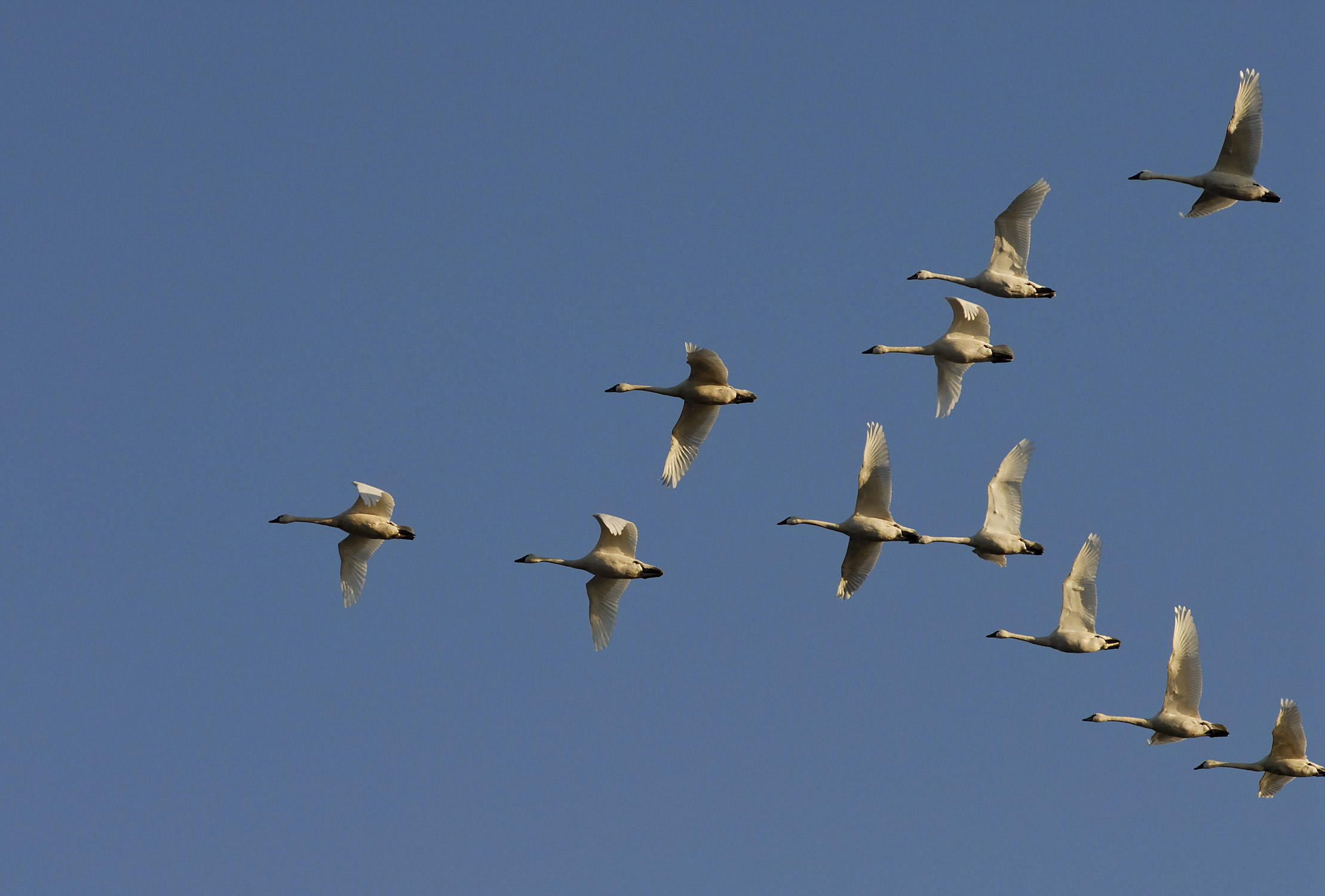The Tundra Swan is known for its exquisite features and courting rituals, which have made it revered throughout history by people like the Navajo, Ancient Greeks and even Meriwether Lewis, who called them “whistling swans” because of their unique calls. All of this elegance is encompassed in a large frame that can grow to 52” with a 5-foot wingspan and weigh up to 14.4 pounds. This swan can be spotted by its all-white plumage, black feet and bill, and long, slender neck.
Tundra Swans breed in the Arctic Coastal Plain in Canada then migrate during the winter to the West and East coasts of the United States, where they live in wetlands and salt marshes.
Wherever they may be found, the small population of the Tundra Swan makes them vulnerable to drastic changes caused by humans, which is evident by population declines at their wintering grounds. These areas, many of which are located in North Carolina, have been disturbed by hunting, the destruction of aquatic plants and competition from the invasive Mute Swan. In order to adapt, the Tundra Swans have started moving closer to farms to forage food, which is not ideal for swan or farmer.
The following IBAs are important to the success of Tundra Swan populations and the conservation efforts in place to protect them.
- Alligator River Lowlands
- Chowan River Bottomlands
- Currituck Marshes- Pine Island
- Lake Mattamuskeet-Swanquarter
- Mackay Island
- Pea Island
- Pungo-Pocosin Lakes
- Roanoke River Bottomlands
Through a national climate study, Audubon has identified the Tundra Swan as a climate threatened bird. Learn more here.
How you can help, right now
Donate to Audubon
Help secure the future for birds at risk from climate change, habitat loss and other threats. Your support will power our science, education, advocacy and on-the-ground conservation efforts.
Sign Up For Our eNewsletter
Keep up-to-date on all that happens with Audubon North Carolina's research, events and volunteer opportunities.





